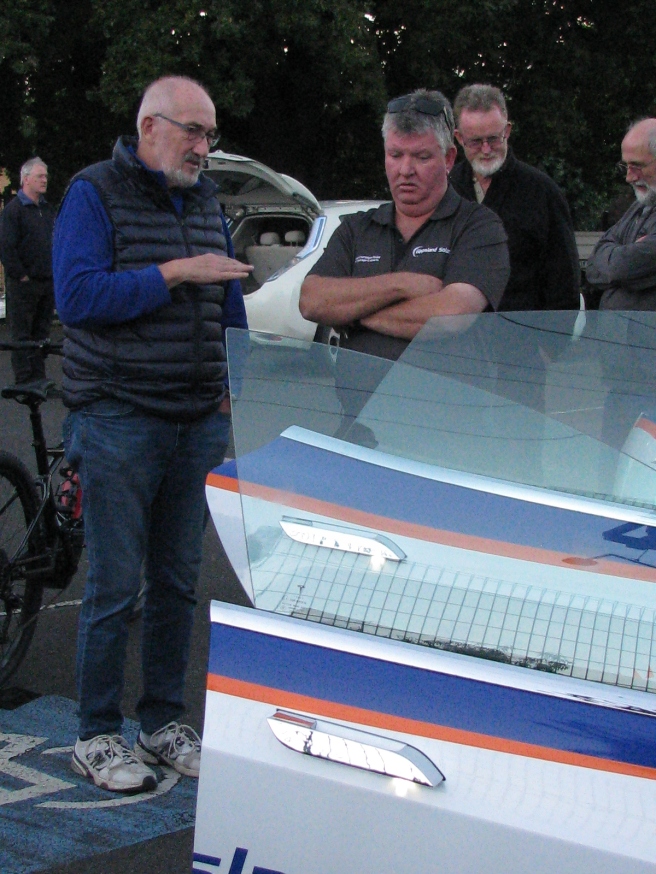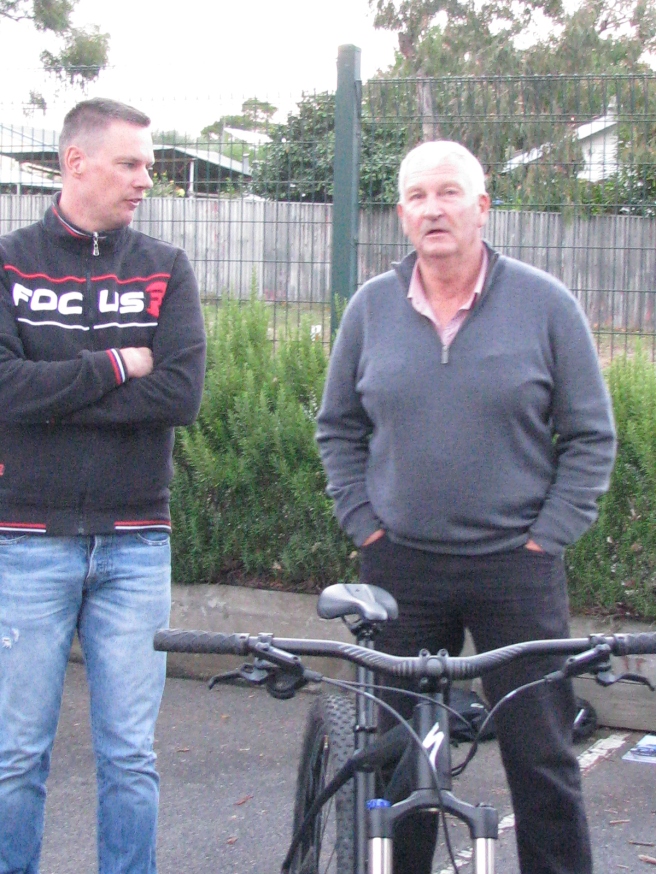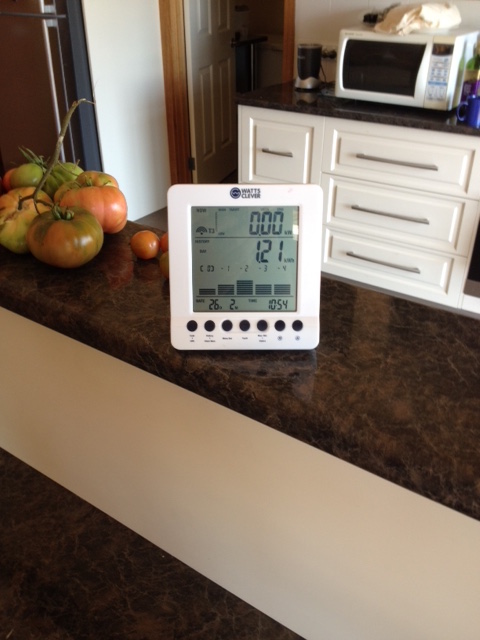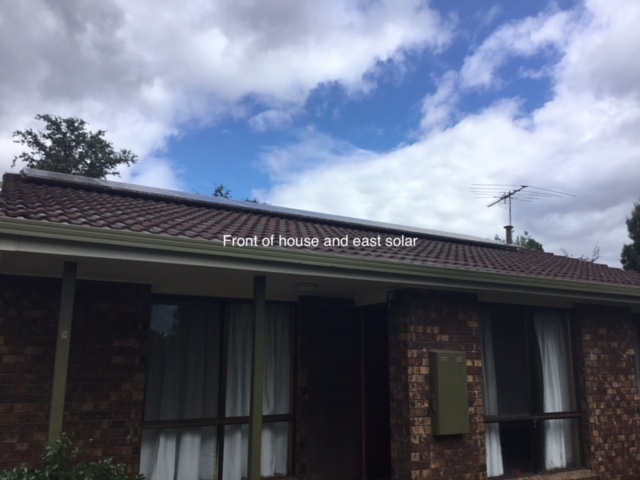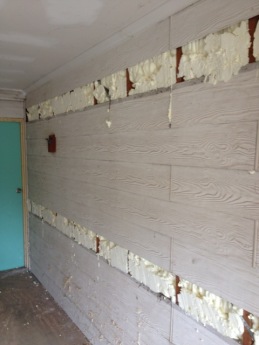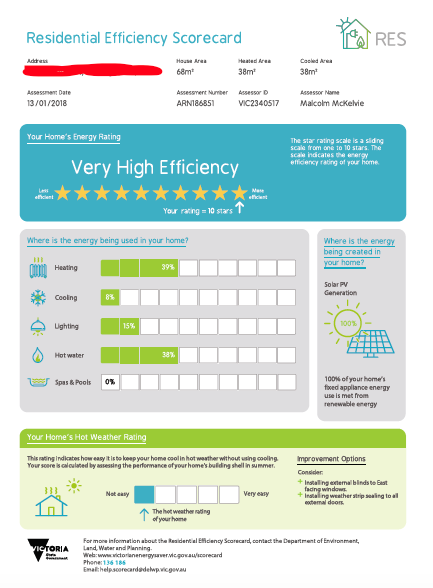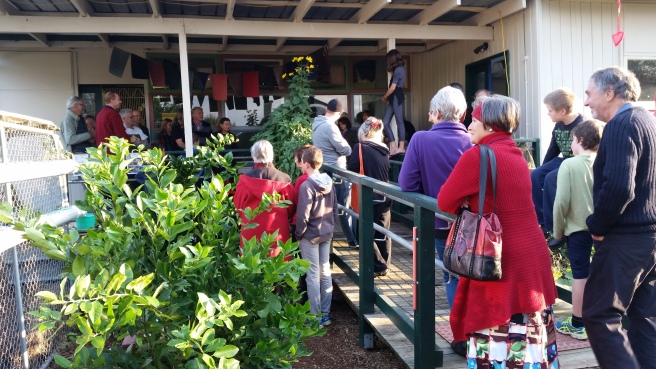
Notes from the Sustainable House Day tour 2018
House design : Steve Hanson of Little Solar Houses
Builder: Alan Hauxwell, Yarragon. Completed 2013 ish.
Materials:
Floor- concrete slab on waffle pods and perimeter insulated with polystyrene panel.
Walls- strawbale with lime/ sand render. Mostly internal, rammed earth feature walls for added thermal mass are made from local road sand from Shady Creek just north of Yarragon. External timber cladding is with silvertop ash.
Windows- composite timber/ aluminium double glazed from Miglas in Melbourne. North shading is temporarily from shadecloth while the ornamental grape vines grow.
Ceiling insulation- sprayfoam sprayed under the roofing iron/ sisalation.
Roof- colorbond
Using the Energy Freedom Home headings:
Lighting
LED throughout except for 1-2 halogen bedside lamps remaining
Draught proofing
BBSN did not have our blower door at the time the house was built but testing since has shown a result of 5.3 ACH50, with the biggest leak identified in the sprayfoam insulation near one of the rammed earth wall ends. I assume it was hard for him to reach at the time. The woodheater has obligatory ventilation holes too.
Insulation
The strawbale walls have an R value of about 12, the windows about 0.5, the sprayfoam about 4. The small area of rammed earth wall exposed to the outside have a very low R value but heat transfer is slow as it is so thick.
Appliances and cooking
We became converts to induction cooktop cooking when we saw it at a friend’s house. It’s quick, responsive and easy to clean. Electric oven, microwave. Some preheating of the kettle with an old one on the woodheater. I try to minimise standby power use by turning things off at the wall. At least some thought went into power point placement to enable that.
Heating and cooling
There is no cooling device other than ceiling fans. The only heater is the woodheater. In the ceiling of the heater alcove there are ducts that run to each end of the house with in line fans- a heat shifter. Our daughter likes to use it for her end of the house but we hardly use it for ours.
Hot water
The storage tank is located in a special cupboard next to the woodheater so we can thermosiphon from the wetback to the tank through insulated copper pipes. There are also 40 evacuated tubes (Apricus) on the roof, with the hot water pumped when the sensors indicate the manifold is hotter than the tank. There is no electric or gas boosting. When we had 3 teenage daughters at home there were times we had to light the fire for hot water rather than room heating but that is now a rare event.
Energy monitoring and control
I bought a Watts Clever monitor a few years ago. It shows only what we are importing from the grid, not our solar generation or export. I like that the monitor is always there rather than having to log in on a phone or computer. I plan to arrange a monitor for the off grid system shortly.
Solar power
We had a 4.8kw system from the start with normal grid connection with a SMA inverter. This year we have used some second hand lead acid batteries from Hazelwood to build a hybrid off grid system, installed by Geoff Boadle from Sustainable Impact. An extra string of solar panels of 2.7kw was added to charge the batteries. There are 2 strings of 24 batteries, each being 2V 468ah, giving 48V and 22464ah of which only the top 30% or so is usable to preserve the battery life. If the batteries are low I can flick a switch to top up from the grid instead of starting a generator. The whole house is now connected to the battery system, except the induction cooktop and oven and the electric car charging point. Planned modifications include installing a switch to move one of the strings of panels to either grid connect or battery depending on the season and also a switch in the main switchboard to move the oven/ cooktop between grid or battery depending on the season.
What’s it like to live here?
During construction, even before lock up stage, the builders and contractors remarked how cool it was to work in over summer and one was amazed how hot the water was in winter, just from the evacuated tubes. We find the temperature remains within comfortable levels almost all the time but we are glad to light the fire in winter. Our energy bills have been $800 paid to power shop over the last 12 months. Although the gas line runs through the property, we are not connected. No water bills either.

The reduction over the years reflects children moving out more than anything else. The battery system became live in July this year so future graphs should be even lower. Our daily chart is quite spiky reflecting days when we have charged the electric car either overnight or at periods without much sun, which often happens. If we were paying for petrol for about 15,000km per year that would be 750 litres * say $1.40= $1050 so I think we are well ahead.

Although we are paying for electricity, we are exporting more than we import as shown below:
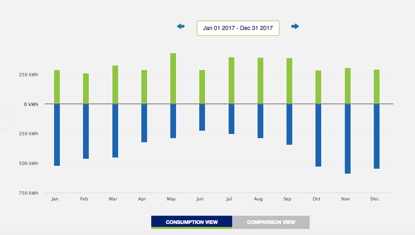
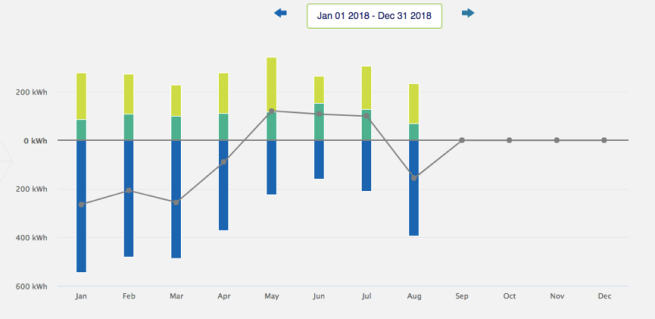
What did it all cost?
These are approximate figures as we haven’t kept a strict eye on it all over time.
The house cost about $550,000 with the original grid connect solar system.
The off grid battery system cost another $15,000 but I got the secondhand batteries quite cheap at auction so an all new system this size would be considerably more.
I expect our electricity imports to drop dramatically now. Even if we eliminated any power purchases, the off grid system will still take many years to pay off financially. How much value do you put on having power when it goes out all around? That’s happened once since July for a period of 3-4 hours during the evening cooking time which we were easily able to adjust to by plugging in an old electric frying pan.


